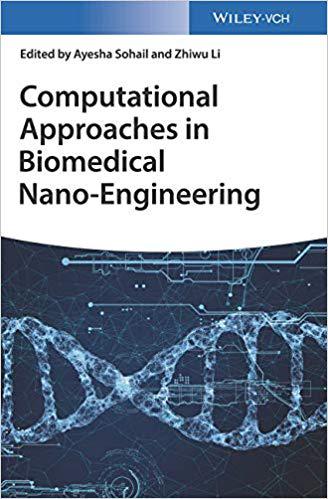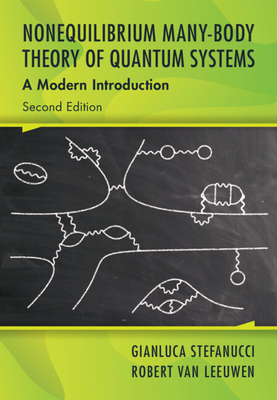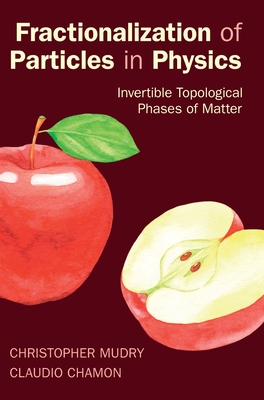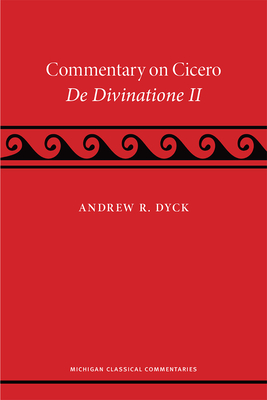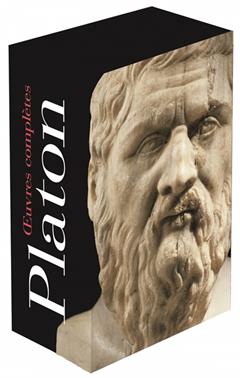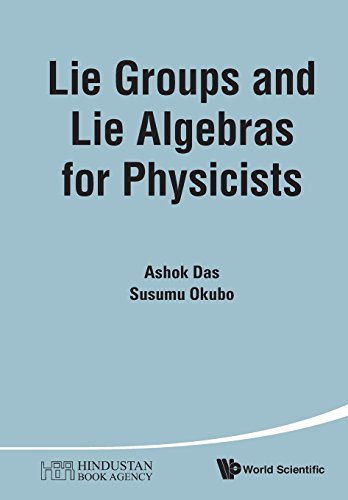图书简介
This book comprehensively and systematically treats modern understanding of the Nano-Bio-Technology and its therapeutic applications. The contents range from the nanomedicine, imaging, targeted therapeutic applications, experimental results along with modelling approaches. It will provide the readers with fundamentals on computational and modelling aspects of advanced nano-materials and nano-technology specifically in the field of biomedicine, and also provide the readers with inspirations for new development of diagnostic imaging and targeted therapeutic applications.
1 Computational Approaches in Biomedical Nanoengineering: An Overview 1 Ayesha Sohail and Zhiwu Li 1.1 Introduction 1 1.2 Nanobiotechnology in Disease Diagnosis 3 1.2.1 Application of Nanoparticles for Discovery of Biomarkers 4 1.2.2 Nanotechnology-based Biochips and Microarrays 5 1.2.3 Detection via Semiconductor Nanocrystals 5 1.2.4 Nanoscale Sensor Technologies for Disease Detection via Volatolomics 6 1.3 Nanobiotechnology in Treatment 8 1.4 Nanobiotechnology in Target-specific Drug Delivery 8 1.4.1 Future of Giant Magnetoresistance (GMR) Sensors: An Alternative to the Traditional Use of Enzymes, Radioisotopes, or Fluorescent Tagging 8 1.4.2 Drug Delivery via Hyperthermia 9 1.5 Computational Approaches 10 1.5.1 ComputationalModel of Drug Targeting 11 1.5.2 ComputationalModel of Electrical Activity in Cardiac Tissue 11 1.5.3 ComputationalModel of Fringe Field Effect 13 1.5.4 ComputationalModel of Nanoparticle Hyperthermia 14 1.5.5 Hybrid Models in Computational Nanobiotechnology 15 1.5.6 Machine Learning for Detection and Diagnosis of Diseases 15 1.5.6.1 Machine Learning and Recent Bioinformatics: Case Studies 16 1.5.6.2 Current Challenges 17 References 18 2 Nanotechnology Applications - The Future Arrived Suddenly 23 Manuel Alberto M. Ferreira and Jose A. Filipe 2.1 Introduction 23 2.2 Nanotechnology: A Brief Approach 24 2.3 Nanopanels: A Success of Nanotechnology in Industry 28 2.4 Nanoelectronics: Improving the Life Standard 30 2.5 Nanotechnology in Medicine: Friendly Efficient Healthcare 32 2.6 Ethics and Nanotechnology 34 2.7 Concluding Remarks 39 References 40 3 Biosynthesized Nanobullets for Microbes and Biofilms 43 Lubna Sherin, Zareen Arshad, and Tehniyat Liaqat 3.1 Introduction 43 3.2 Biosynthesized Nanoparticles 44 3.2.1 Microorganisms 45 3.2.2 Algae 47 3.2.3 Fungi 48 3.2.4 Yeasts 50 3.2.5 Actinomycetes 51 3.2.6 Plants 52 3.3 Antimicrobial Potential of Nanoparticles 55 3.4 Mechanism of Antimicrobial Action of Inorganic NPs 57 3.4.1 Interaction of NPs with Cell Membrane 57 3.4.2 Oxidative Stress 58 3.4.3 NP Interaction with Proteins 59 3.5 Reactivity of NPs against Biofilms 59 3.6 Nanosilver as Efficient Antimicrobial Agent 63 3.7 NPs as Efficient Carrier of Traditional Antibiotics 65 3.8 Real-life Applications of Antimicrobial Nanomaterials 68 3.8.1 Wound Dressing Materials 68 3.8.2 Tissue Scaffolds 69 3.8.3 Disinfecting Medical Implant and Devices 70 3.8.4 Antimicrobial Food Packaging 70 3.8.5 Water Disinfection 72 3.8.6 Application in Personal Care Products 73 3.9 Conclusion and Future Prospects 73 References 74 4 The Physics of Nanosensor Systems in Medicine and the Development of Physiological Monitoring Equipment 89 Robert Splinter 4.1 Introduction 89 4.1.1 Biological Sensing 89 4.1.2 Applications 92 4.2 Sensing Technology 93 4.2.1 Sensing Targets 93 4.2.2 Static vs Dynamic Events/Sensing 93 4.2.3 Mechanism of Action (MoA) for Sensing 94 4.2.3.1 Chemical 95 4.2.3.2 Electronic 95 4.2.3.3 Mechanical 98 4.2.3.4 Optical 100 4.2.3.5 Single-molecule Detection/Tagging Sensor Design 100 4.2.3.6 Thermal/Energetic 101 4.3 Sensor Design 102 4.3.1 Ion-sensitive Solid-state Field-Effect Transistor (ISFET)/ChemFET 102 4.3.2 Carbon Nanotube Field-Effect Transistor (CNTFET) 104 4.3.2.1 Computational Analysis of Nanosensor Detection 106 4.4 Discussion 107 References 108 5 Nonlinear Multiphysical Laminar Nanofluid Bioconvection Flows: Models and Computation 113 O. Anwar Beg 5.1 Introduction 113 5.1.1 Bioconvection 113 5.1.1.1 Bioconvection Lewis Number 115 5.1.1.2 Bioconvection Peclet Number 116 5.1.2 Nanofluids 116 5.1.2.1 Buongiorno MIT Model 117 5.1.2.2 Nanofluid Heat Capacity Ratio 118 5.1.2.3 Brownian Motion Parameter 118 5.1.2.4 Thermophoresis Parameter 119 5.1.2.5 Tiwari-Das Model 119 5.2 Numerical and Semi-numericalMethods 121 5.2.1 Overview of Numerical/Semi-numericalMethods 121 5.2.2 Finite Element Methods 122 5.2.3 Finite Difference Methods 123 5.2.3.1 Keller Box Method 123 5.2.3.2 Nakamura Tridiagonal Scheme 124 5.2.4 Adomian Decomposition Method 124 5.2.5 Gauss-Lobatto Quadrature 126 5.3 Multiphysical Nanofluid Bioconvection BVPs 126 5.3.1 Von Karman Swirl Bioconvection Nanofluid Model 126 5.4 Conclusions/Future Directions in Nanofluid Bioconvection 140 References 140 6 Exploring Nanotechnology Applications in Medicine 147 Stefano Nobile and Lucio Nobile 6.1 Introduction 147 6.2 Nanotechnology in Medicine 148 6.2.1 The Nervous System 149 6.2.2 Cancer 154 6.2.3 Infectious Diseases 154 6.2.4 Cardiovascular Diseases 155 6.2.5 Pneumology 155 6.3 Bone Tissue Engineering 156 6.3.1 Components of the Skeletal System 156 6.3.2 Scaffolds 159 6.3.3 Bioactive Nanoparticles 162 6.3.4 Improvement of Scaffold Mechanical Strength 163 References 166 7 Microtubules: Nanobiomechanical Simulation 173 Mohsen Motamedi 7.1 Introduction 173 7.2 Microtubules 174 7.2.1 Assembly and Disassembly of Microtubules 175 7.3 Review on Previous Researches 176 7.3.1 Experimental Researches 176 7.3.2 Analytical and Computational Research 178 7.4 Microtubule Dynamic Instability 179 7.4.1 Nanobiomechanical Model 180 7.4.1.1 Molecular Dynamic Analysis 180 7.4.1.2 Molecular Structural Mechanics 181 7.4.2 FinalModel 187 References 187 8 Simulation of Flowing Red Blood Cells with and without Nanoparticle Dispersion Using Particle-based Numerical Methods 191 Abdolrahman Dadvand 8.1 Introduction 191 8.2 Biomechanical Properties of RBCs 192 8.3 RBC Membrane Models 193 8.3.1 Shell-based Membrane Models 193 8.3.2 Spring-based Membrane Models 196 8.3.3 Spring- and Damper-based Membrane Model 197 8.4 Numerical Simulations of RBC Motions in Capillaries 199 8.4.1 Dissipative Particle Dynamics (DPD) Method 199 8.4.2 Smoothed Particle Hydrodynamics (SPH) Method 201 8.4.3 Lattice Boltzmann Method (LBM) 203 8.4.4 Immersed Boundary Method (IBM) 205 8.5 Application of Particle-based Methods to Simulate RBC Motion 205 8.5.1 Preliminary 205 8.5.2 Applications of DPD Method in RBC Simulations 206 8.5.2.1 Simulation of Single RBC Motion 206 8.5.2.2 Single RBC Motion in Tube Flow 207 8.5.2.3 Simulation of Two or Multiple RBC Motion 207 8.5.3 Applications of SPH Method in RBC Simulations 210 8.5.4 Applications of LBM Method in RBC Simulations 211 8.5.4.1 Simulation of Single RBC Motion 211 8.5.4.2 Simulation of Two or Multiple RBC Motion 211 8.5.4.3 Simulation of RBC Suspension Motion 212 8.6 Other Particle-based Methods 212 8.7 Nanoparticle Dispersion in RBC Suspension 213 8.8 Advantages and Disadvantages of Particle-based Methods 215 References 215 9 Impact of Nanofluid in Medical Treatment byMathematical Modeling 227 KhadijaMaqbool and Sidra Shaheen 9.1 Concept of Fluid Mechanics and Basic Laws 227 9.2 Nanofluid and Properties 228 9.3 Newtonian and Non-Newtonian Fluid 229 9.4 Non-Newtonian Fluid FlowModel for Blood 229 9.5 Drug Delivery System 230 9.6 Nanoparticles as Drug Carrier 231 9.7 Importance of Shape and Material Properties of Nanoparticles 231 9.7.1 Carbon-Based Nanoparticles 231 9.7.2 Metallic Nanoparticles 232 9.7.3 Ceramic Nanoparticles 232 9.7.4 Polymeric Nanoparticles 233 9.8 Concentration Properties of Magnetic Nanoparticles 233 9.9 Treatment by Incorporating Magnetic Source 233 9.10 Treatment by Heat Transfer 233 9.11 Boundary Layer Flow of Power Law Nanofluid 234 9.11.1 Solution of the Problem 236 9.11.2 Graphical Results 236 9.12 Casson Nanofluid over a Stretching Surface 237 9.12.1 Solution of the Problem 239 9.12.2 Results and Discussion 239 9.13 Third-grade Nanofluid Flow in a Channel 239 9.13.1 Solution of the Problem 242 9.13.2 Results and Discussion 243 9.14 Hydromagnetic, Irrotational, Laminar Flow of Non-Newtonian Nanofluid Through a Channel 243 9.14.1 Solution of the Problem 248 9.14.2 Results and Discussion 250 References 252 10 Physiological Modeling and Simulation of Fluid Flows 255 Najeeb A. Khan and Faqiha Sultan 10.1 Introduction 255 10.2 Physiological Modeling and Mathematical Formulation 258 10.3 Solution of the Governing Equations 263 10.4 Results and Discussion 264 10.5 Conclusion 273 References 275 Index 279
Trade Policy 买家须知
- 关于产品:
- ● 正版保障:本网站隶属于中国国际图书贸易集团公司,确保所有图书都是100%正版。
- ● 环保纸张:进口图书大多使用的都是环保轻型张,颜色偏黄,重量比较轻。
- ● 毛边版:即书翻页的地方,故意做成了参差不齐的样子,一般为精装版,更具收藏价值。
关于退换货:- 由于预订产品的特殊性,采购订单正式发订后,买方不得无故取消全部或部分产品的订购。
- 由于进口图书的特殊性,发生以下情况的,请直接拒收货物,由快递返回:
- ● 外包装破损/发错货/少发货/图书外观破损/图书配件不全(例如:光盘等)
并请在工作日通过电话400-008-1110联系我们。
- 签收后,如发生以下情况,请在签收后的5个工作日内联系客服办理退换货:
- ● 缺页/错页/错印/脱线
关于发货时间:- 一般情况下:
- ●【现货】 下单后48小时内由北京(库房)发出快递。
- ●【预订】【预售】下单后国外发货,到货时间预计5-8周左右,店铺默认中通快递,如需顺丰快递邮费到付。
- ● 需要开具发票的客户,发货时间可能在上述基础上再延后1-2个工作日(紧急发票需求,请联系010-68433105/3213);
- ● 如遇其他特殊原因,对发货时间有影响的,我们会第一时间在网站公告,敬请留意。
关于到货时间:- 由于进口图书入境入库后,都是委托第三方快递发货,所以我们只能保证在规定时间内发出,但无法为您保证确切的到货时间。
- ● 主要城市一般2-4天
- ● 偏远地区一般4-7天
关于接听咨询电话的时间:- 010-68433105/3213正常接听咨询电话的时间为:周一至周五上午8:30~下午5:00,周六、日及法定节假日休息,将无法接听来电,敬请谅解。
- 其它时间您也可以通过邮件联系我们:customer@readgo.cn,工作日会优先处理。
关于快递:- ● 已付款订单:主要由中通、宅急送负责派送,订单进度查询请拨打010-68433105/3213。
本书暂无推荐
本书暂无推荐
